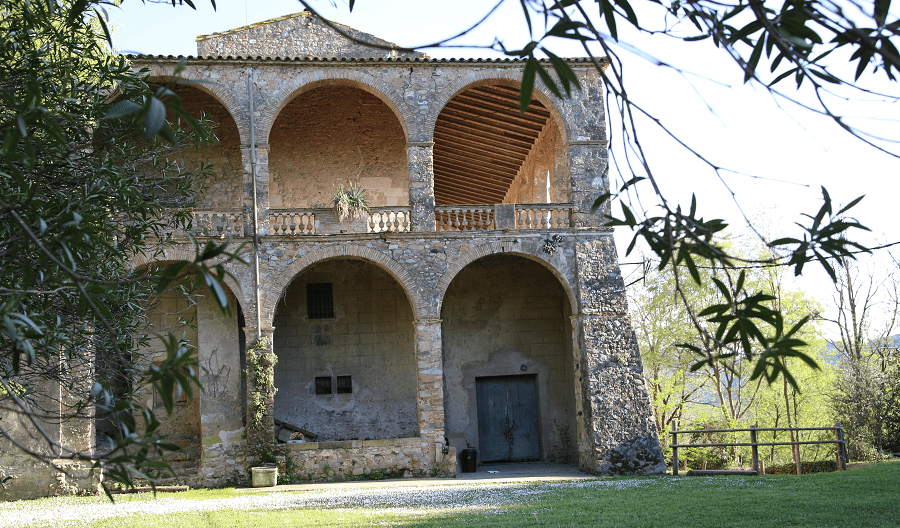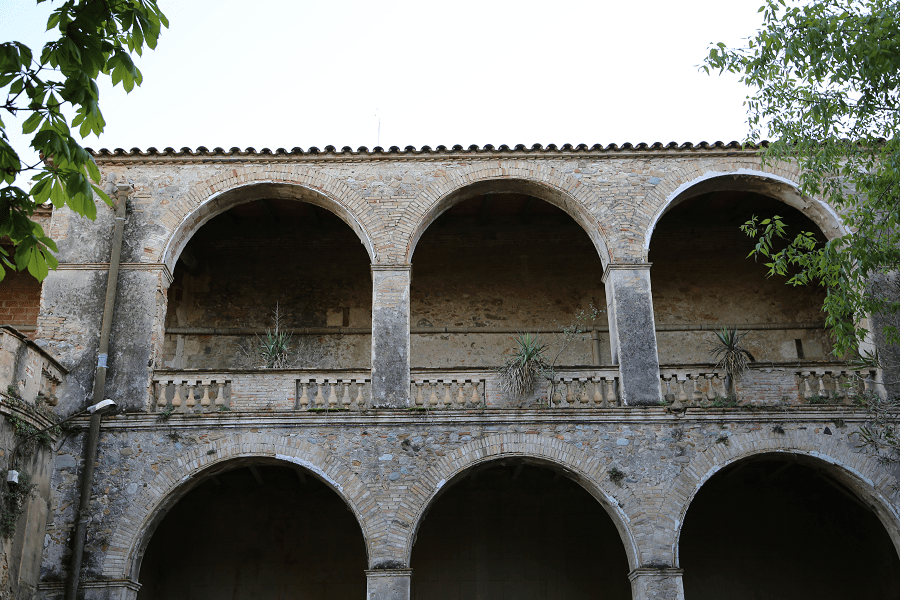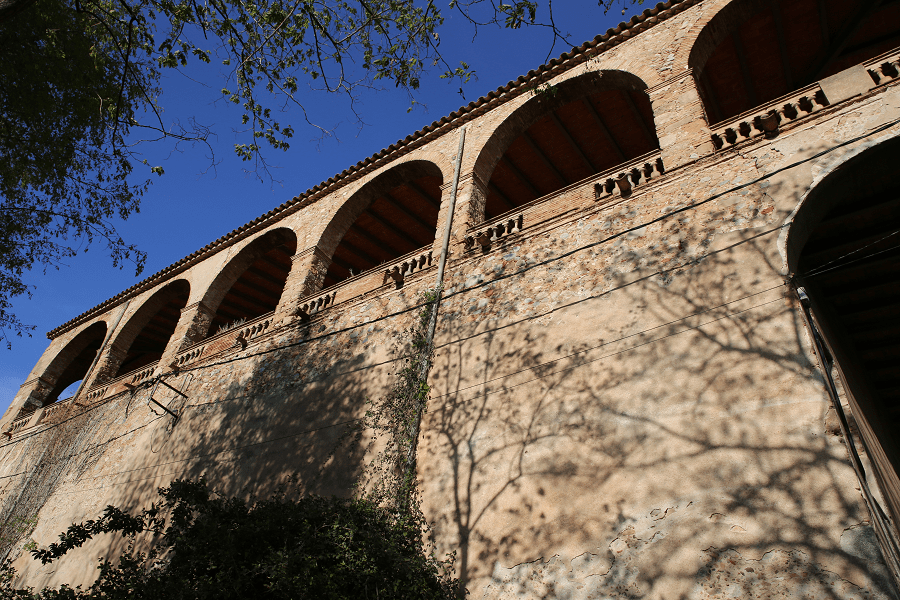The Medinyà Castle (cat. Castell de Medinyà) is a castle in the municipality of the same name (Girona province), Catalonia, Spain. declared a cultural heritage of national importance. It is located on a small hill where the old town of the municipality is located – in the northwest of the Gavarres massif.
Currently, the castle consists of several buildings, forming a square plan, facing northeast, around a central courtyard. Most buildings are responsive to the passage of time: much of the current appearance is a response to Renaissance and neoclassical reforms.
It is very likely that the castle previously had a Romanesque church of San Sadurni, rebuilt in 1763, as well as several existing buildings next to the church.
From the remains of this enclosure of an ancient medieval fortress, there correspond several sections of walls outside the current castle, both in the southwest and in the south, as well as possibly the lower part of the bell tower of the church.
According to official sources dedicated to Romanesque Catalonia, “on the hill next to the place where the castle stands, a few years ago you could still see the foundation of a round tower, which probably belonged to the original fortification.”
What remains of the sovereign enclosure, in addition to the possible existing walls in the current buildings, is a prominent tower located south of the fence, flanking the front door. It is made in the Gothic style. The tower is about seven meters in diameter, two floors and an attic with powerful walls at the base, reaching 2.5 meters. It adjoins a passage in the form of a cylindrical vault, at the top of which there is a floor with a Gothic window.
In 1017 this place was registered under the name “Medinian” (cat. Medinianus), and in 1089 it was named “Sancti Saturnini de Mediniano” (cat. “Sancti Saturnini de Mediniano”) by the will of Dalmau Vidal. In 1128 the name Dalmau was registered in the “Liber feudorum maior” (great book of feudal possessions), associated with the name Medinian, and in 1168, the nobles Dalmau de Medinian and Gerau de Medinian, the latter as regent of Girona, were documented. It is documented that in 1305 the Xetmar family inherited the Medinian clan in the possession of the same name.
During the Spanish Civil War (1936-1939), the castle was occupied by the Republican army. At the end of the war, 1000 Republican army prisoners of war settled in the attic of the castle and in the church. These events left the castle in a deplorable state and meant the loss of various items of special value and the archive.
On 18 July 1940, heavy hail damaged the roof tiles. Over time, the cairns slowly collapsed and most of the roofs collapsed.
The reconstruction was carried out in two stages. The main roofs were repaired first, in 1964 the galleries were covered again and the internal structure was renewed.
In the well-tended gardens, everything comes to life again. The castle is currently owned by the Fonsdevela family, the Marquis de Torre (cat. Marquesos de la Torre).
The castle is located 20 minutes (15.2 km) across the N-II from Girona.
GPS coordinates: 42 ° 02 ′ 58 ″ N, 2 ° 51 ′ 54 ″ E

















